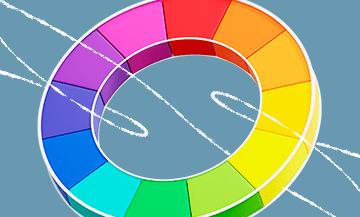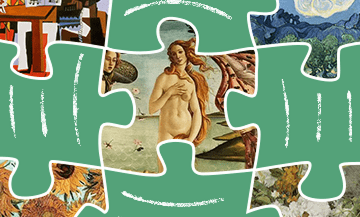In the world of art, the first step is always exciting. When you face a blank canvas and your brush trembles in your hand, a natural question arises: “What should I paint with oil for the first time?”
Even Vincent Van Gogh said that a blank canvas negatively affects the artist’s creative process. In his letters to his brother Theo, the artist even complained that the empty canvas paralyzed him and made him believe he was incapable of anything.
But, unlike Van Gogh, you have the Internet and my article, so I won’t leave you alone with your fear.
So, you’ve bought all the necessary materials for painting, but no ideas for your first painting have come to you? Let’s come up with them together!
First oil painting: psychological and technical features
- Individuality and Expression: your first painting is an opportunity to express yourself. Think about what inspires you, what emotions you want to convey through your work. Be open to new ideas and styles.
- Patience and Self-Awareness: working with oil paints requires time and patience. Be prepared for the fact that the painting may not turn out perfect immediately and don’t be afraid to make mistakes. This is a normal part of every artist’s creative journey.
- Researching the Topic: if you are interested in a specific topic and want to depict it, do a bit of research. Study other artworks related to your topic to better understand how to approach its representation.

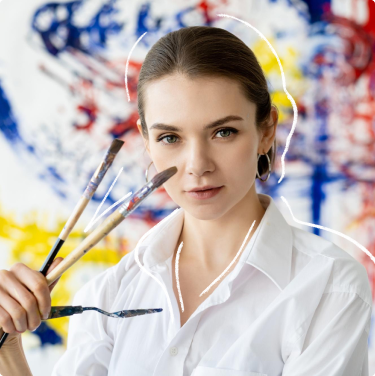
Technical Aspects:
- Choosing Materials and Canvas: buy quality materials for your work. Consider different types of canvases and oil paints to find the combination that suits you best.
Even if you’re just starting out, it’s best to avoid very cheap paints. It’s wiser to go for products in the mid-price range. When choosing colors, prefer white, yellow, red, blue, and black. - Mastering Technique: learn the basic techniques of oil painting: layering, brush strokes, textures, light play. Experiment, and you’ll soon find your style.
Watch films, study photographs, immerse yourself in art, and follow inspiring blogs on social media. This experience will help you develop your own visual perception and aesthetic taste. - Preparing to Work: ensure you have a comfortable creative environment. You’ll need a well-lit space, proper brushes, a palette, and a clean workspace.
Brushes can be simple but quality. Choose flat, round, and bristled ones — they’re convenient to work with. - Errors, Errors, and More Errors: don’t be afraid to make mistakes while painting. Firstly, this helps you grow as an artist, and secondly, oil paints fortunately allow you to correct your work even after a layer has dried.
Of course, if you’re painting for the first time, you might just be facing a challenge — the fear of the blank canvas. This stage is familiar to many artists, including those who have long since moved past being beginners.
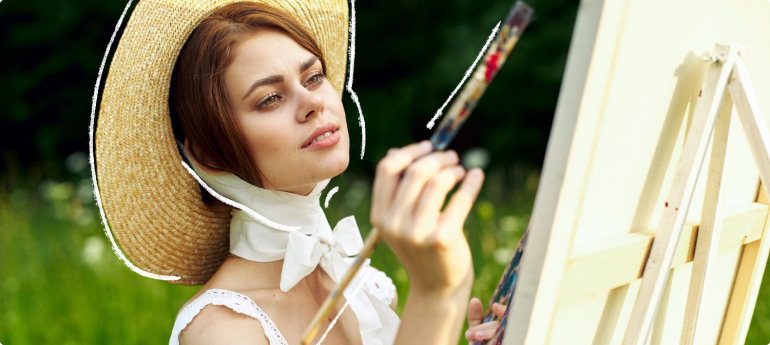
But it is important to remember the most important thought ↓
Just give it a try. Paint something simple — like a geometric shape. And then everything will go smoothly…
The process of creating a painting
- Idea and Concept: Everything starts with an idea. The artist thinks about the theme, mood, and message they want to convey through their painting. It can be something inspiring, emotional, or simply beautiful.
- Canvas Preparation: Next, the artist chooses a canvas of the appropriate size and prepares it for work. Most often, the canvas is pre-coated with a primer.
- Choosing Paints and Brushes: The artist decides which oil paints to use based on the color palette of their painting, and selects various brushes for techniques and details.
- Creating a Sketch: To have an idea of the composition and arrangement of elements, a sketch is made. This is a sort of plan that helps structure the idea before moving on to the main work.
- Applying the First Layer: The first layer is the foundation on which all subsequent layers will develop.
- Detailing: Now, the artist gradually adds details, creating depth and volume. Special attention is paid to shadows and light to bring realism to the painting.
- Drying and Correction: Each layer requires time to dry. During this time, the artist can analyze the work, make corrections, emphasize details, or change the direction of the painting.
- Finishing: After complete drying, the painting can be protected with varnish to preserve its colors and textures for many years.
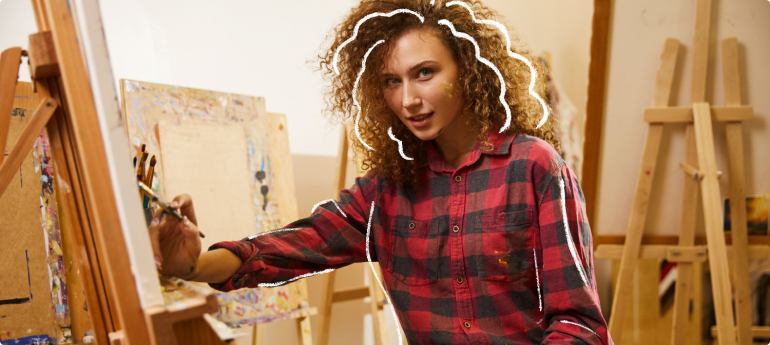
What to paint in oil on canvas: ideas
If you are not yet skilled in drawing techniques, abstraction is perfect for you. Choose 3-4 colors that are pleasing to the eye and let your creativity flow.
Start with a pencil sketch on the canvas or dive straight into working with a brush — this way, you have plenty of room to express your imagination! The main thing is to act in a way that you enjoy! Listen to your feelings and inner inspiration, and the success of your first painting will not be long in coming.
Or take note of the following ideas and practices. My students love to paint these subjects:
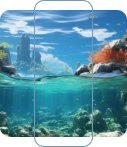
Underwater World: depict a fantastic underwater world with colorful fish, corals, and seaweed.

Cityscape at Night: paint a night cityscape with bright lights of skyscrapers reflecting in the water.

Fantasy Forest: imagine a magical forest with unusual trees, glowing mushrooms, and mysterious creatures.

Romantic Sunset: convey the soft hues of a sunset on canvas, depicting the warm colors of the sky and its reflection in the water.

Futuristic City: try painting a city of the future with tall buildings, flying cars, and unique architecture.
Abstraction
Abstraction is one of the most unique and experimental approaches in painting. It differs from traditional styles and offers artists the opportunity to freely express their feelings, emotions, and creative ideas through shapes, colors, and textures.
For beginner artists, it will be especially interesting to look at this style, as it opens up unlimited spaces for imagination and self-expression.
Unlike other painting styles, abstraction has no rigid boundaries and rules, which means you can paint however your soul desires.
Colors in abstraction become the main characters of the work and convey the emotions of the creator. They can be aggressive and dynamic, or calm and harmonious — the choice is yours.
It is important to note that oil abstraction requires the artist to think freely and have the ability to delve into the depths of their inner world. Therefore, forget about specific shapes and objects, and focus on what you feel at the moment of creation. Allow yourself absolute freedom.
Thanks to its unpredictability and expressiveness, oil abstraction is a wonderful way for a beginner artist to achieve self-realization.
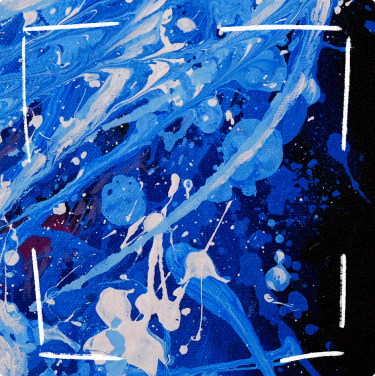
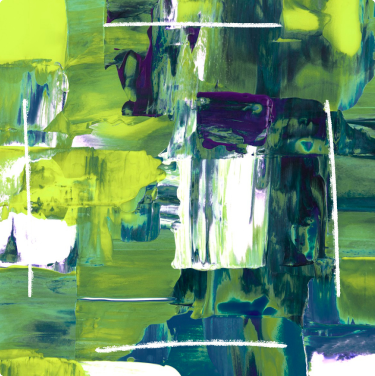
Landscapes
Landscape in oil painting is the most popular and captivating style. It conveys the beauty and depth of nature.
An important part of landscape in oil painting is the choice of motif. Beginner artists should start with simple landscapes, depicting forests, lakes, mountains, or fields. Gradually, you can delve into complex compositions and add details: trees, flowers, sky, water.
Landscapes are enriched with a palette of colors, from the shades of green in the trees to the multicolored sunsets. You can create a landscape that reflects a certain season or even try to convey the dynamics of a natural process — wind in the field or water movement. But don’t focus too much on details. If you are just starting to paint, you need to learn to convey the overall atmosphere of the picture and then move on to more complex tasks.
By the way, working in the landscape style is also an interesting way to study the world around you. You can spend time outdoors, observe changes in colors and textures, and then recreate them on your canvas.
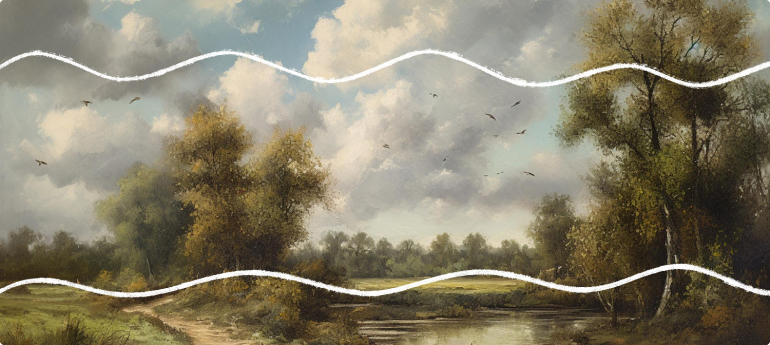
Still life
Often, beginner artists who want to try their hand at oil painting choose still life.
Such a piece is perfect for decorating the kitchen, and it also serves as an excellent means for honing drawing skills.
Moreover, setting up a still life at home and capturing it on canvas is quite simple — choose a neutral background and arrange a composition of your favorite objects. Food, dishes, flowers in a vase or pot are ideal for this style.
Try different compositions, arranging objects to create engaging visual stories. Play with the shapes and sizes of the items.
Don’t limit yourself to ordinary fruits or flowers. Use items with character, such as antique objects, old books, or something entirely unconventional. Even a beginner’s still life can be filled with an interesting narrative.
This is your opportunity not only to learn the technique but also to express your creative individuality. Remember that each painting is unique, and your vision of the world will become a key element of your creativity.
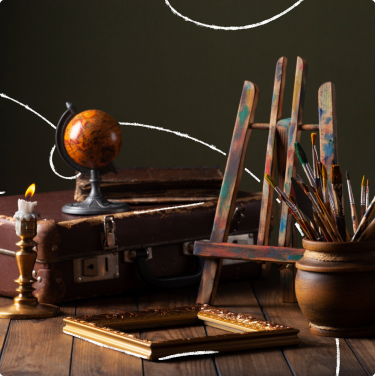
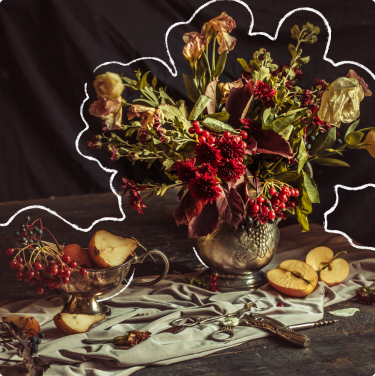
Interior flowers
A trendy direction in contemporary painting is interior flowers. In this style, you can choose any motifs that you like — roses, tulips, lilies. Painting them on canvas is quite easy, as such a painting does not require special drawing skills.
The feature of this style is the exaggeration of color and form. You don’t need to aim for realistic representation; you can play with shades and expressiveness, painting beautifully and emotionally. After all, these are flowers — as diverse as the artists who depict them.
For such a painting, pastel shades or muted colors are suitable, as they convey coziness and warmth in the space. Consider linen shades, peach colors, or soft coral hues.
Start small: create interesting compositions, seek harmonious color combinations, and soon you’ll find how your skills and paintings with interior flowers will come alive with new colors, opening endless horizons in art.

Animals
What else should a beginner artist paint? Of course, animals!
Such paintings, like flowers and landscapes, fit beautifully into almost any interior.
Animals in this style are depicted with close attention to their anatomy, texture, and the details of fur, feathers, or scales. It might be challenging for a beginner, but you can observe and study the features of the animal’s shape and movement, learning to convey its character through brush strokes.
Or start with the basics. For example, with the fundamental shapes of the head, body, and limbs. Familiarize yourself with basic anatomy, study how the skeleton, muscles, and fur are structured in different species. Then you can move on to actual painting!
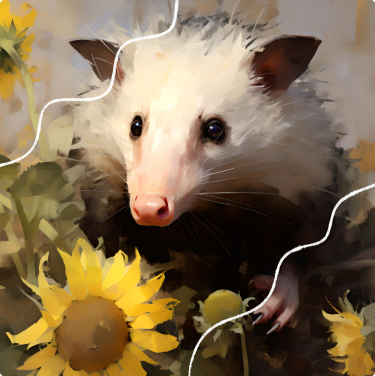
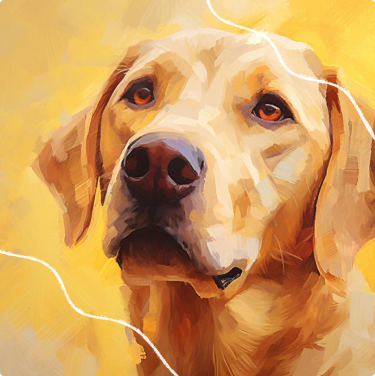
In conclusion, don’t be afraid to cross the boundaries of your artistic expectations and try something new. Don’t seek perfection in every brushstroke; instead, enjoy the process and trust your own intuition.
And remember, even if your first experience doesn’t meet your dreams, it is just the beginning of an exciting journey. Every mistake is an opportunity to learn, every failure is a chance to grow.
Only through practice can you discover something amazing — your unique artistic language that is waiting to be revealed and shared with the world. Good luck!
Question-answer
- Landscapes: drawing nature and the environment is an exciting and specific way to improve your artistic skills. You can choose landscapes you like and draw them on-site or from photographs.
- Portraits: drawing portraits is a wonderful opportunity to study the human figure and facial expressions. Try working with different techniques, from pencil and markers to watercolor and pastel.
- Fantasy Creatures: a fun and interesting challenge. Create your own creatures or depict those from existing fantasy and science fiction worlds.
- Abstract Works: try your hand at creating abstract paintings. Such artworks allow you to freely express your feelings and emotions, as well as experiment with shapes, colors, and textures.
A blank canvas is a field of unlimited possibilities. Instead of fearing the unknown, embrace it as a stimulus for creativity. The opportunity to start something entirely new is a privilege, not a threat.
If a large blank canvas seems too intimidating, consider breaking it into smaller sections. Start with one part and gradually expand your creative area.
Look at other artists’ works, read books, visit galleries. Inspiration sometimes comes from the most unexpected sources and can help overcome the barrier of the blank canvas.
Remember, creativity is an individual process, and there is no right or wrong way. So free yourself from fears and just enjoy.
- Prepare the canvas: before you start painting, make sure the canvas is clean and dry.
- Plan the composition: think carefully about your composition, arranging objects in a way that creates an interesting and harmonious layout on the canvas.
- Choose your brushes: for working with oil paints, it is recommended to use brushes with natural bristles. Different brushes serve different functions — large ones are good for applying broad strokes, while small ones are suitable for details and fine lines.
- Be patient and enjoy the process: every artist develops differently, so don’t compare your work to others. Love the process itself and continually improve your skills.



